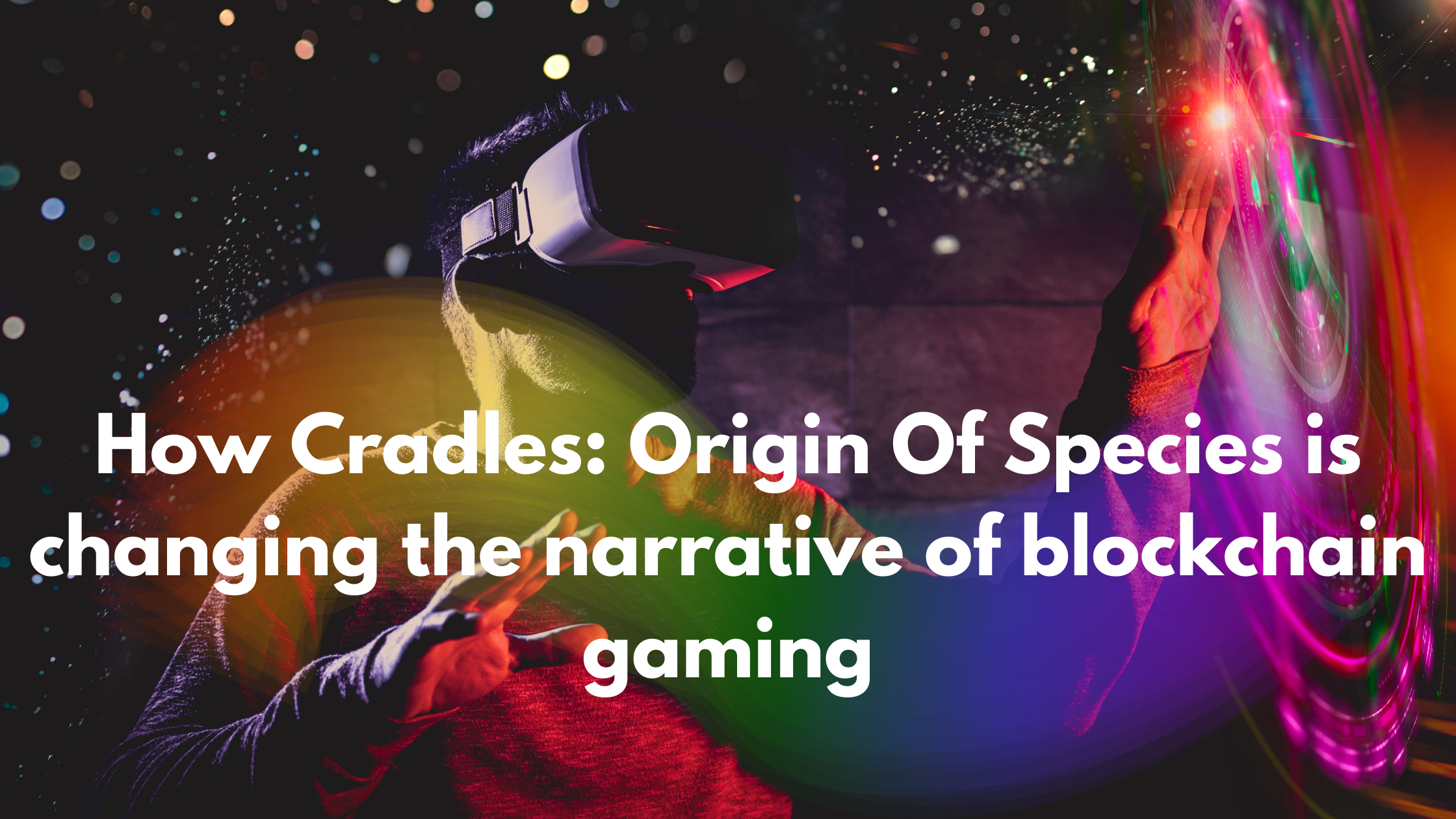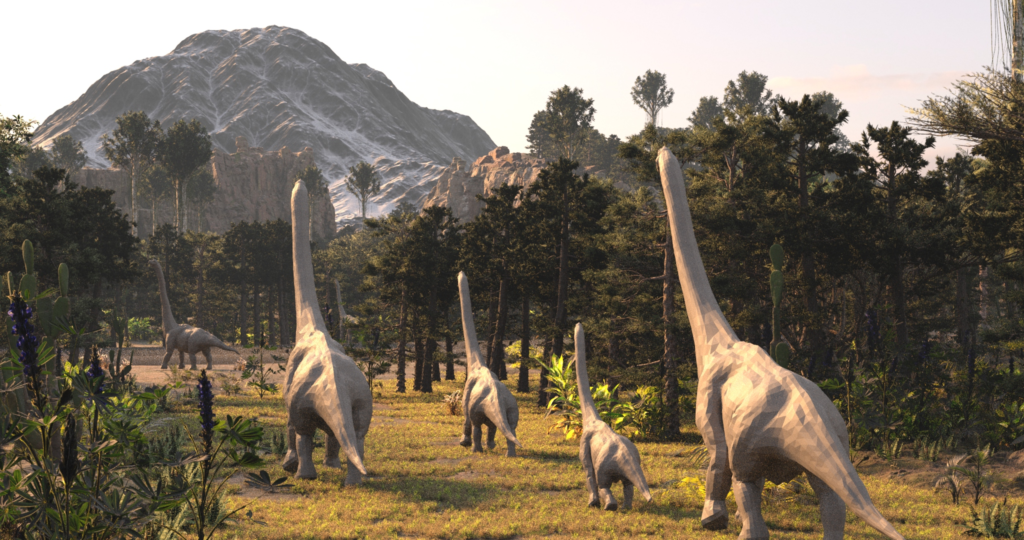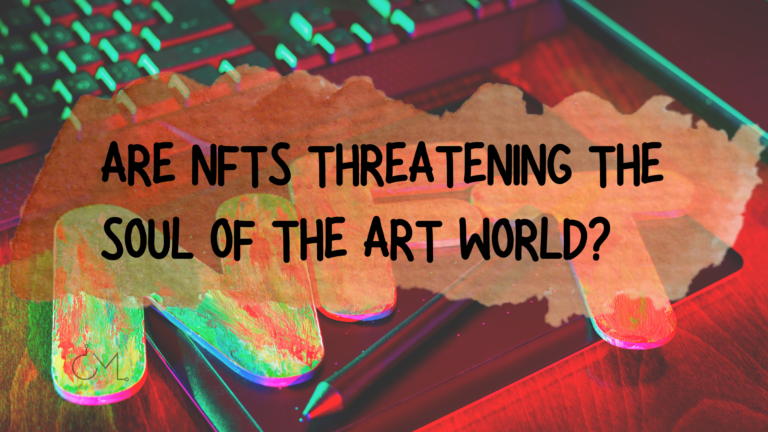
Cradles: Origin Of Species at the forefront of the blockchain gaming evolution
Among the many blockchain game titles coming up, Cradles: Origin of Species appears to stand a cut above the rest. Virtual reality or VR promises immersive experiences, but Cradles is bravely attempting a new type of metaverse where the world and all its elements progressively evolve over time, through innovative use of NFT attributes that change according to block time. If you’re new to Cradles, this introductory post will bring you up to speed.
What is Metaverse?
The metaverse is a hot topic now, taking the not-so-new concept of a digital “jacked-in” internet not unlike popular portrayals like The Matrix (ignore how badly the latest one performed) and Ready Player One.
Former head of strategy at Amazon Studios and renowned venture capitalist Matthew Ball summed it up nicely as “the newest macro-goal for many of the world’s tech giants”.
Popular literature notes the first mention of the metaverse term in Neal Stephenson’s seminal 1992 sci-fi novel, Snow Crash. In it, users interacted with digital forms of themselves called “avatars” not at all unlike in many games that already exist. The concept itself doesn’t necessarily refer to a game, as other social applications that implement aspects of this avatar universe show. And the users (not necessarily players) already demonstrate a willingness to invest time and effort to build their virtual personas and worlds, suggesting that we aren’t too far away from a reality where many people will be connected to the metaverse most of the time, as much as they continue their real-life existence.
For developers like DRepublic, behind the upcoming MMORPG Cradles, the metaverse will encompass a virtual economy many times larger than our entire current global real world economy. And if that doesn’t sound like a typical metaverse project, it’s probably because there isn’t really a consensus as to what an actual metaverse might look like.
There are some accepted norms, however, and some or all of these traits would aptly describe many metaverse projects out there (gaming or otherwise):
- The metaverse persists, whether or not you’re plugged in.
- Users jacking in experience live and in real time.
- It is meant to host an unlimited audience.
- It operates a fully functioning economy.
- It can operate across platforms, as well as digital and physical realms, usually with the assistance of other extended reality tech like AR (augmented reality).
- It allows digital assets to be transported across platforms. Crypto and NFTs have truly demonstrated how this is possible.
- Its experiences and content will at first be created by the companies developing them, but often are later also created by its individual users.
Because an economy must have rules and arbitrators, most metaverses do have a central actor or authority – determining who owns assets and permissions to manipulate them. But Cradles is one of those blockchain projects that wants to attempt open, interoperable specifications and decentralized, permissionless, Turing-complete smart contract platforms (like the Ethereum Virtual Machine) to support and encourage an open ownership economy needed for the metaverse to thrive – itself as an open ecosystem(s).
Naturally, governance issues are what will be the core headache of any such attempt, but just as the internet and its many services started out as single companies to later evolve into many open components, we can possibly predict that today’s metaverse growth may also decouple, just as the internet development trend did after the 1990s.
The other problem that enters into discussion is the state of blockchain gaming itself. Many games, if not all, currently exist as a blockchainization of traditional games instead of being native blockchain games.
In simple terms, this simply means that this new sector is built very much like traditional games, merely inserting a blockchain layer to process transactions. Even if you examine the trendiest games like Axie Infinity, there are huge profits to be made but these titles are only scratching the surface of what might be doable with blockchain, with a basic use of NFT at their core. Study the so-called AAA games and they do make impressive use of rendering engines and powerful hardware – but strip all of that away and there is almost no innovative gameplay aspect that wouldn’t be there without the blockchain technology.
There doesn’t exist yet a game attempting to build on the infrastructure and capabilities of blockchain to result in a true framework of game architecture… until now.
Cradles: Origin of Species, is focused on this very question: can we create native blockchain games, using certain characteristics of blockchain technology to unlock new gaming aspects that traditional games are incapable of?
Without taking away from the vast diversity of gamers, we can accurately categorize blockchain gamers diverge into two extremes: fantasists and profiteers.
The fantasists of blockchain gamers are attracted to the promise of the metaverse and look for these opportunities in existing games. But they don’t offer much from an economic perspective. On the other hand, the profiteers only want to play games with the most potential to earn, setting aside the desire for superior games.
The result of each is undesirable: you get a great game few people want to play because they won’t earn much, or you get a popular game with high profit potential but not necessarily mindblowing in terms of gameplay.
To solve this dilemma of divergence, Cradles proposes a metaverse theory that attempts, for the first time in gaming, to combine stark reality with idealist pursuits. Their principles form a guideline for the basic form of a metaverse whereby game designers can analyze and improve all blockchain games aiming for the “true” metaverse goal.
Weighing in the divergence of several concepts: the metaverse, traditional MMORPG games, and the real world, Cradles proposes three theorems that the metaverse must follow to meet the design of the hypothesis. Whether it is a game or a world, does not need establishing, but it must meet these conditions to become a (sustainable) metaverse.
- It must have market diversification.
- It must have bidirectional demands
- It must be an entropy increasing world
Note: If you’re really keen on the academic version of this, do read their published paper on the meta universe theory. It’s ranked first in the download volume of 10 disciplines (including philosophy, game science, sociology.) on SSRN e-journals, so you know it’s serious stuff.
The Cradles team proposes:
- No manufacture of any NFT garbage, meaning no simple labeling of everything that is remotely associated with art as an NFT.
- No plagiarizing of traditional gameplay, like Axie Infinity or Illuvium.
- No reliance on token price for income, noting that some DeFi projects with game skins apply significant selling pressure.
- No advertising of market collection value and rarity value. The biggest feature of their props is the utility value and this value is only defined by users.
- Developed and operated by its foundation, Cradles actively intends to break away from the traditional gaming development system.
Entropy
You’ll be hard-pressed to find a single traditional game that even attempts to create the ability of “entropy increase”, one of the most important laws of the universe, utterly ignored in the metaverse. In fact, the basic concept of time in most games does not even exist, beyond perpetual cycles of game sessions. To create a constant law of the blockchain world, using block time to simulate real game time, will be a first attempt for all blockchain games to define time.
Game Intro

Cradles is a blockchain game set in a prehistoric setting, using a dual token system to enable entropy increase and true time lapsing. The CRDS platform token exists outside of the game, used to buy tickets for games and other events, allowing admission to players. Users holding CRDS can choose to stake or provide liquidity to obtain more coins in the future.
The in-game tokens are the CRYSTALS, which players will be able to consume directly within the game. As we do not want players to lose the right to enter the game due to the volatility of CRDS, the game will provide a relatively stable exchange rate between CRDS and the in-game CRYSTALS. In other words, no matter how much CRDS rises, players can still enter the game cheaply. Its aim is to provide decentralized game services for all players, not just for wealthy ones.
Set in the Triassic age (roughly 251 to 199 million years ago on Earth), the world of Cradles is one pockmarked by violent volcanic eruptions. Though a distinct event of climate change believed to have extinct the majority of Earth’s species, it was also a watershed moment that witnessed the birth of many new creatures, including rodent-size mammals and the first dinosaurs.
Players begin as a ‘NewMan’ born in the Triassic — hunting, living, and fighting against various bosses and “dark” creatures bent on destroying the world.
Essentially, CRADLES wants to create a better world for players with a living, breathing economy completely reliant on mass player interactions.
Its engineers have developed a brand-new token protocol for our game, called the EIP-3664 protocol, which will attach a time attribute to all of its props. The value in reality needs to be tested by time, and the value in blockchain needs to be tested by blockchain time. Therefore, for the first time ever, EIP-3664 or Time-NFT, has the nature of changing its attributes with time, and can be modified or upgraded over time. Imagine, for instance, that after a very long block time, an iron sword may become a rusty iron sword, or an antique iron sword. This will conform to the laws of real-world physics — something unique that has never been attempted before in the gaming industry.
Special minerals called TimeSpaceSand can also be used by players to travel to different magical worlds and different points in time.
Once players reach certain levels of governance, through city building and tech research, civilization in the game will develop. Through player progressions in technology and governance, the game will advance through era progression, such as from the Triassic age to the Jurassic age.
A community-driven project, run by a foundation and focusing on the innovation of game content and token mechanism, Cradles seeks to utilize the power of emerging technology to provide fresh gameplay that will deliver new narratives and meaningful experiences to gamers.






